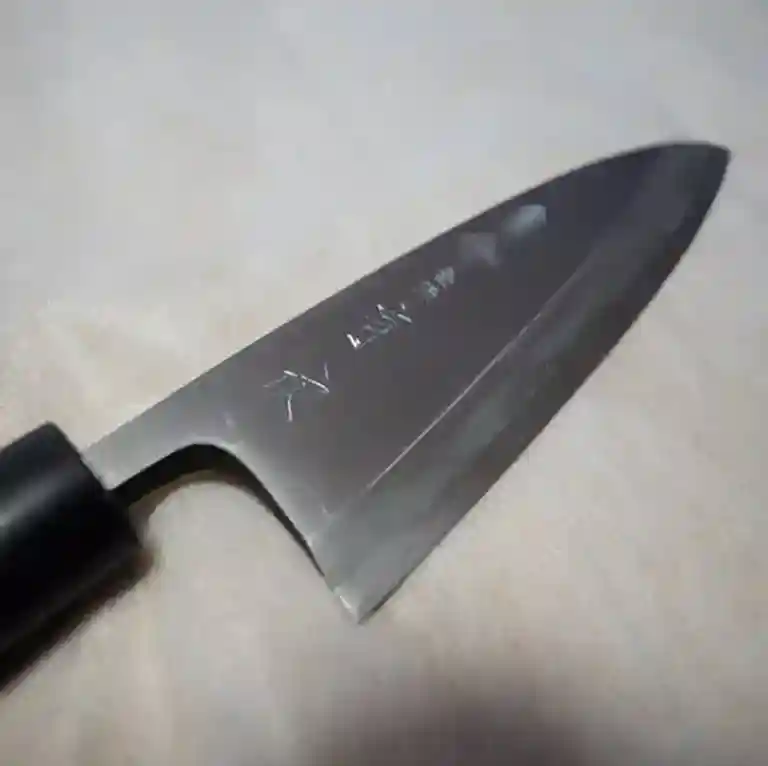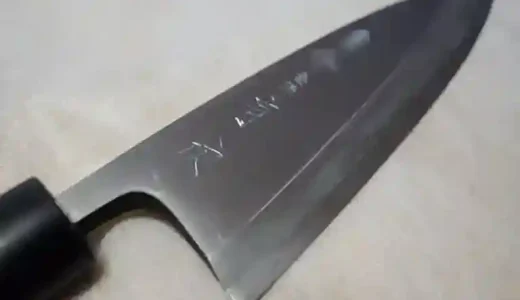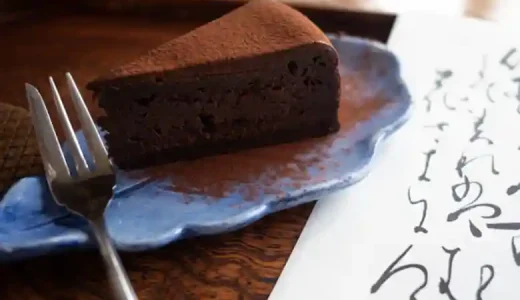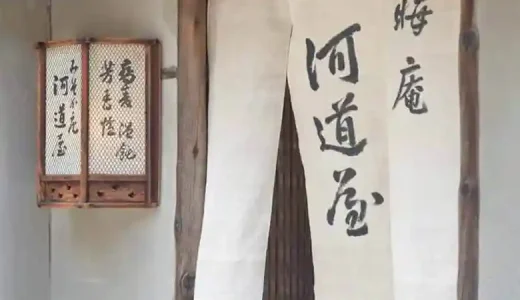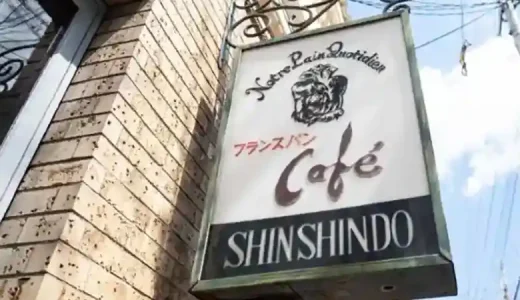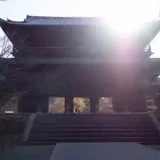I traveled to Kyoto. This trip aimed to buy Japanese kitchen knife at Aritsugu at Nishiki Market.
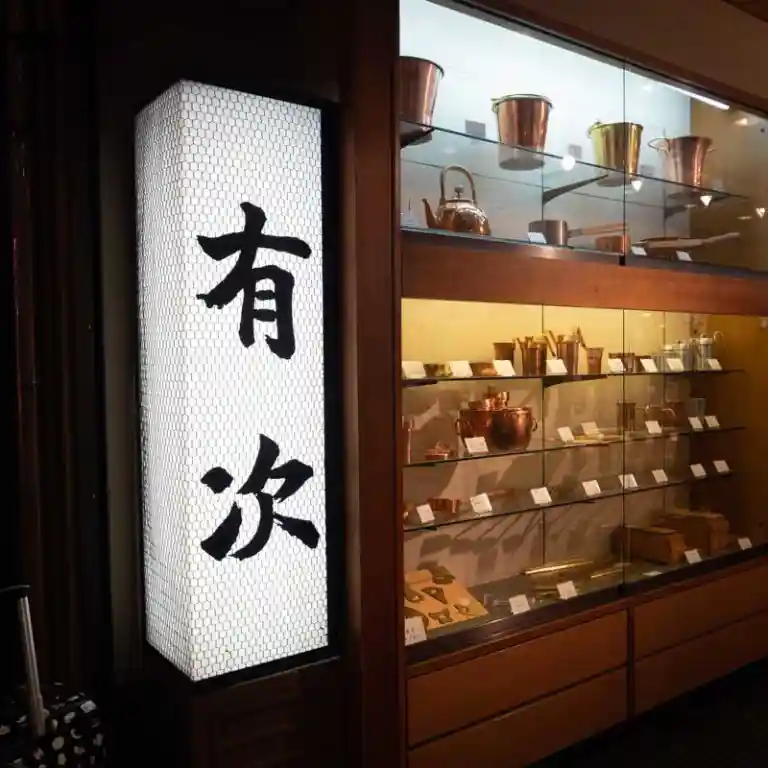
Nishiki Market is a vegetable and fish market known as “Kyoto’s kitchen. Aritsugu is one of the busiest stores in the market.
Aritsugu
Aritsugu was founded in 1560. The founder, Fujiwara Aritsugu, worked at the Imperial Palace as an official blacksmith. In 1876, Japan enacted a ban on wearing swords, which prohibited all but soldiers, police officers, and government officials from wearing swords. Instead of blades, Aritsugu began making cooking knives. Aritsugu also began making pots and pans and other cooking utensils around 1907. They began retailing around 1945 and set up a store in Nishiki Market in 1981. The current owner is the 18th generation.
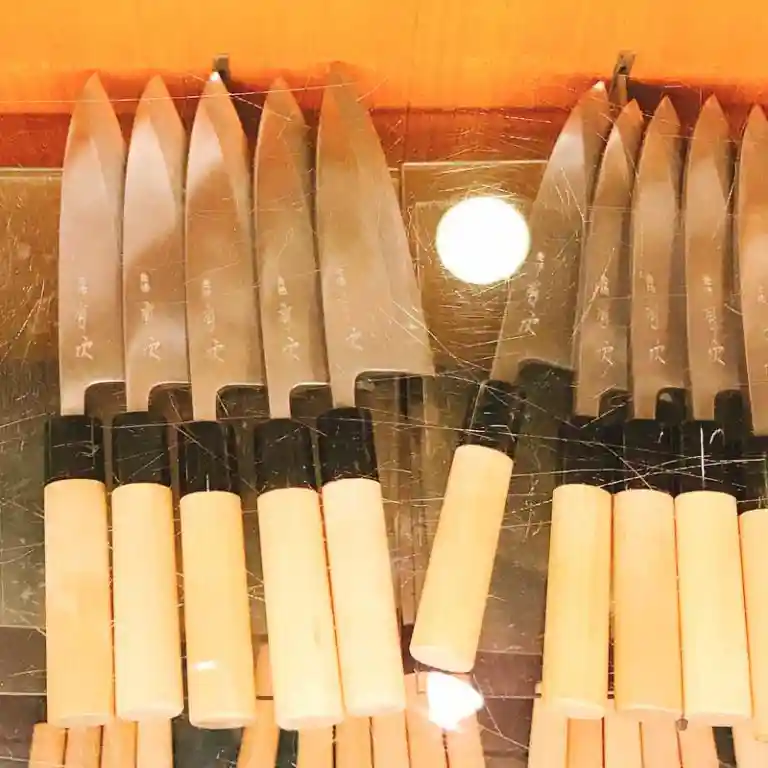
I walked into the store and was amazed at the amount of merchandise on display. The entire wall of the store was a display shelf lined with Japanese kitchen knives. Japanese kitchen knives sold at Aritsugu are made by artisans in Sakai, Osaka, who carry on the tradition of swordsmithing.
Aritsugu sold more than 400 knives in 50 different types. The shape of a kitchen knife depends on the purpose for which it is used. A kitchen knife is called “Hocho” or “Bocho” in Japanese. In addition to the “Santoku Gyuto bocho,” “Deba bocho,” “Petit knife,” and “Sashimi bocho” used at home, there were many other knives that I had never seen before and did not know how to use. There were various shaped Japanese knives, such as knives for cutting fugu (blowfish), cutting horse mackerel, peeling chestnuts, cutting sushi, cutting rice cakes, and so on. The same kind of knives was available in different sizes by a few centimeters.
Cooking gear
In addition to knives, a variety of other cooking tools are sold. All products are professional grade.
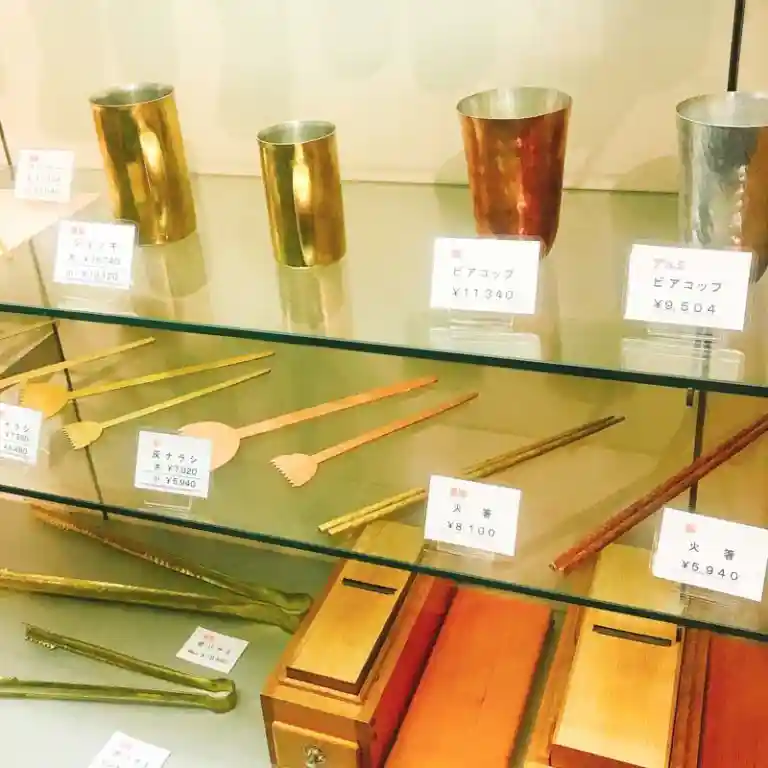
The photo above shows Aritsugu’s show window. On the top shelf are beer cups, fire chopsticks in the middle, charcoal scissors, and a box of dried bonito flakes on the bottom.
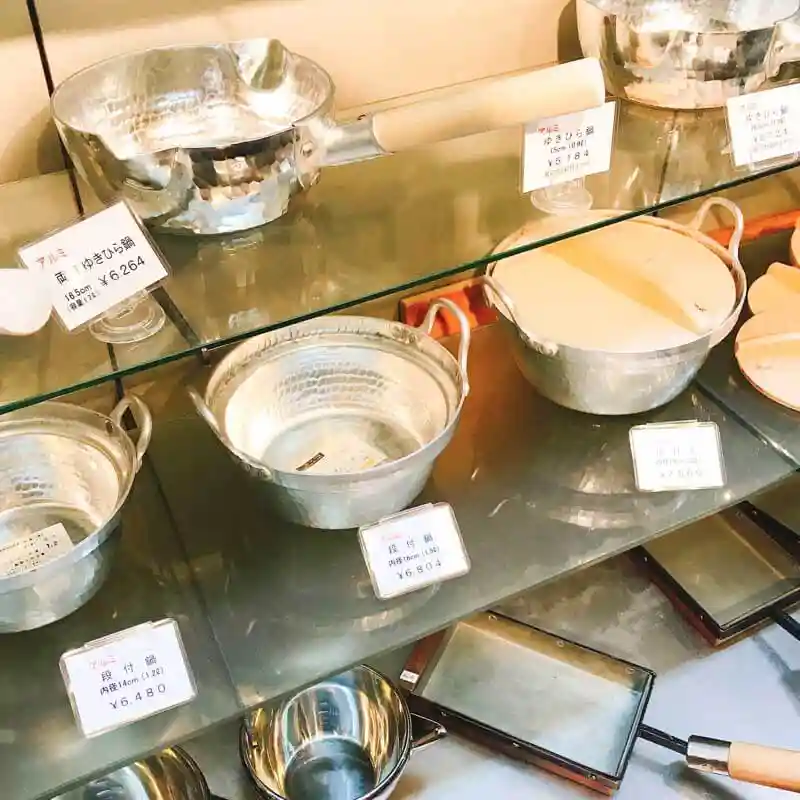
Aritsugu sells a variety of aluminum pots and pans. There are many sizes of pots and pans of the same shape.
There are also many utensils for Japanese cooking.
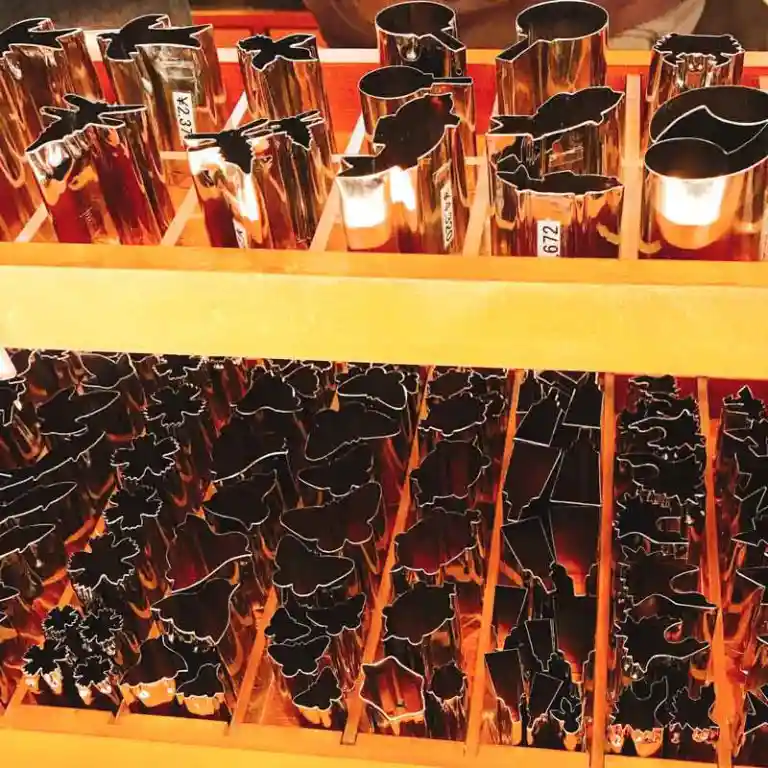
Aritsugu also sells utensils for Japanese cooking. The tools are uniquely shaped like butterflies, turtles, and flowers.
These ladles are spoons for scooping tofu.
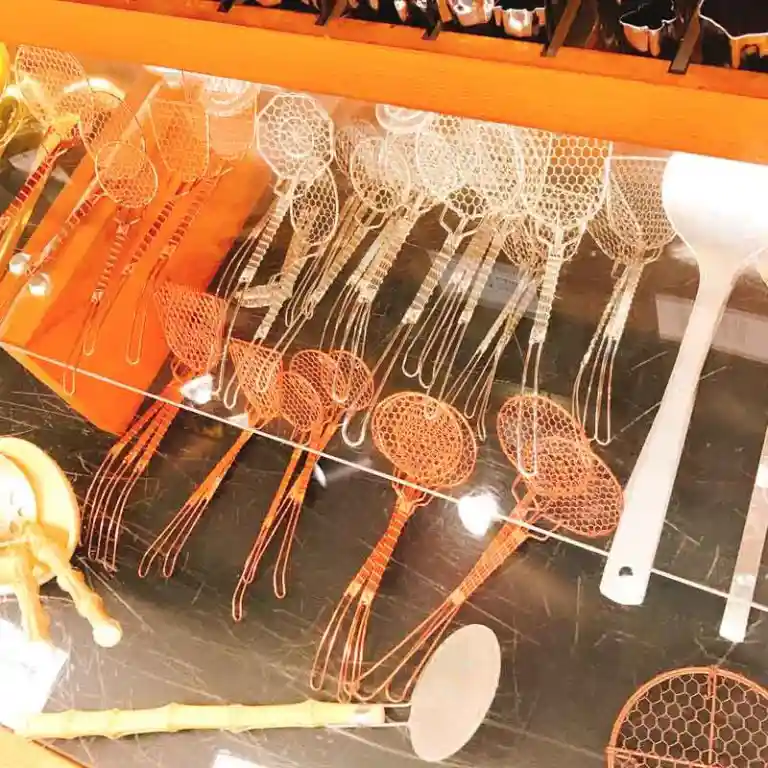
They are made of woven aluminum wire.
Aritsugu sold various sizes of the grater. The blades of the grater are made of copper and are hand-hammered.
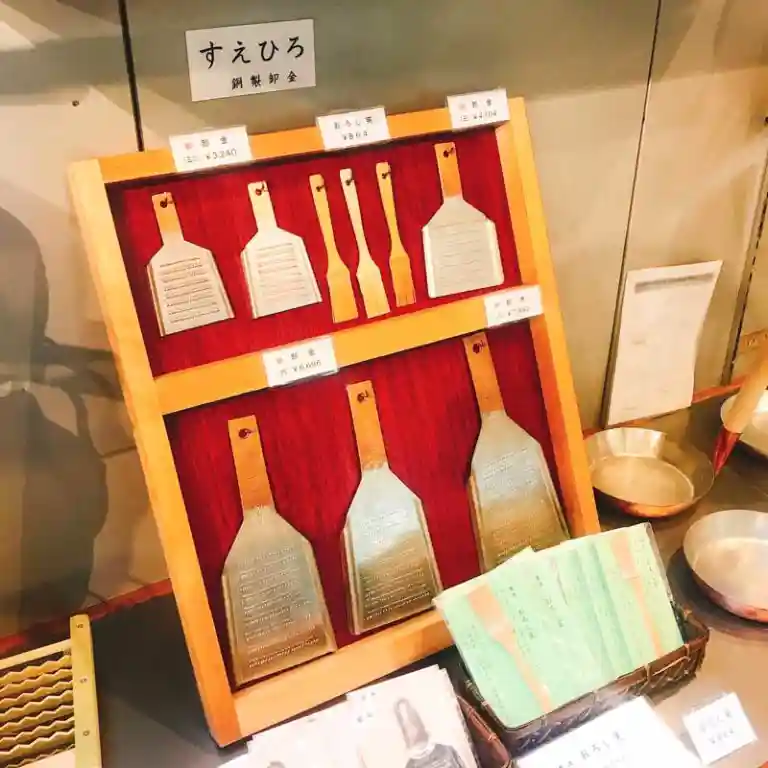
The blade on the back of the grater has a fine grit so that ginger and wasabi can be grated.
This photo shows shelves lined with various copper products.
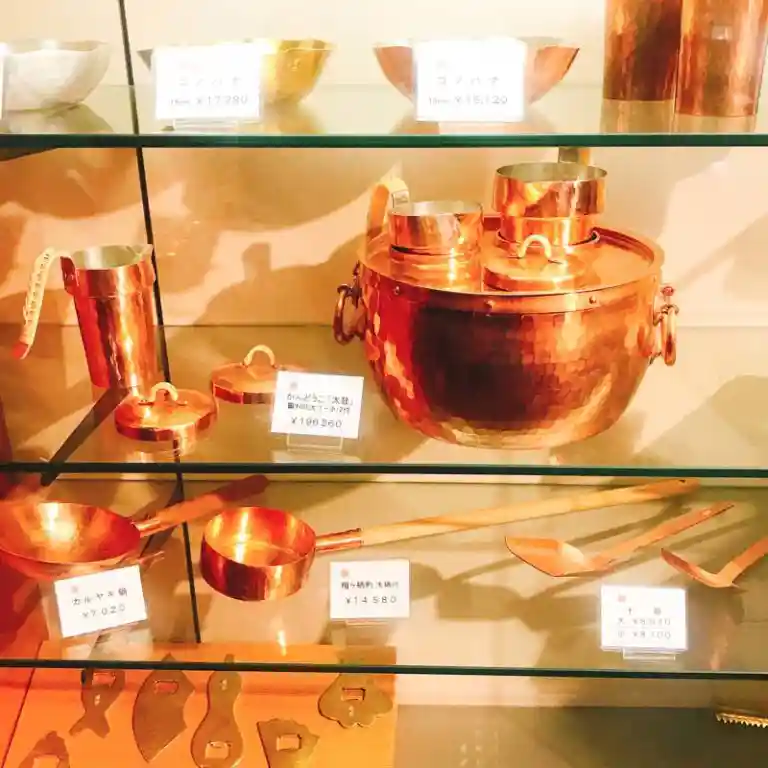
On the top shelf is a salad bowl, and below it is a “Kan-Douko,” a device used to boil Japanese sake in hot water.
Deba bocho (pointed carving knife)
I bought a Deba bocho (pointed carving knife) made in Aritsugu, which I have wanted for a long time. Deba bocho is a Japanese kitchen knife for cutting fish. It is heavier than other knives to cut fish bones, and the blade is wide and thick. Aritsugu sold Deba bocho in various sizes.
While I was choosing a knife, the store staff explained about Deba bocho to me. The store staff was very kind and helpful. I decided on the type of Deba bocho after being asked questions about the kind of fish I would be cutting and how often I would be using it. I also had a chance to try the Deba bocho and choose the size.
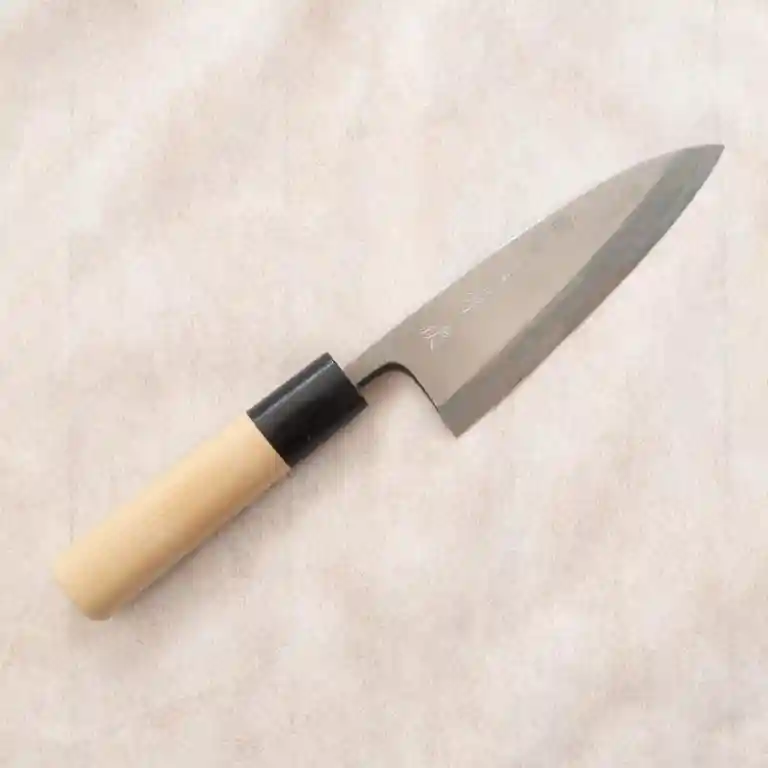
I purchased a Deba bocho called “登録有次(Registered Aritsugu).” Aritsugu sold three types of Deba bocho: “登録(Registered)” , “特製(Special)”, and “上製(Top)”. They have different blade sharpness and holding power. The store staff recommended “登録(Registered)” for home use.
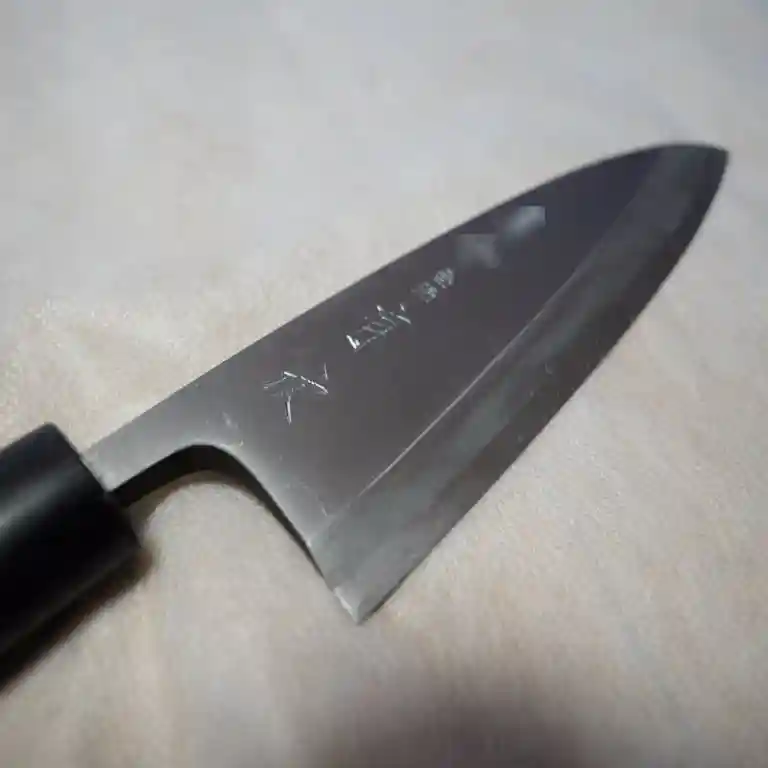
A craftsman working in the workshop at the back of the store sharpened the blades of the knives we purchased. He also engraved my name on the edge.
While sharpening the knives, The store staff showed me how to care for them.
How to care for Japanese kitchen knives
- Scrub with cleanser on a sponge the same day after use
- Scrub the knife from the base to the blade
- Scrub the handle well
- Rinse thoroughly with water
- Wipe thoroughly with a dry towel
- Lay the knife on a pad or something to dry well without storing it immediately
Seventy percent of the customers were foreign tourists. The store staff explained Japanese kitchen knives in English.
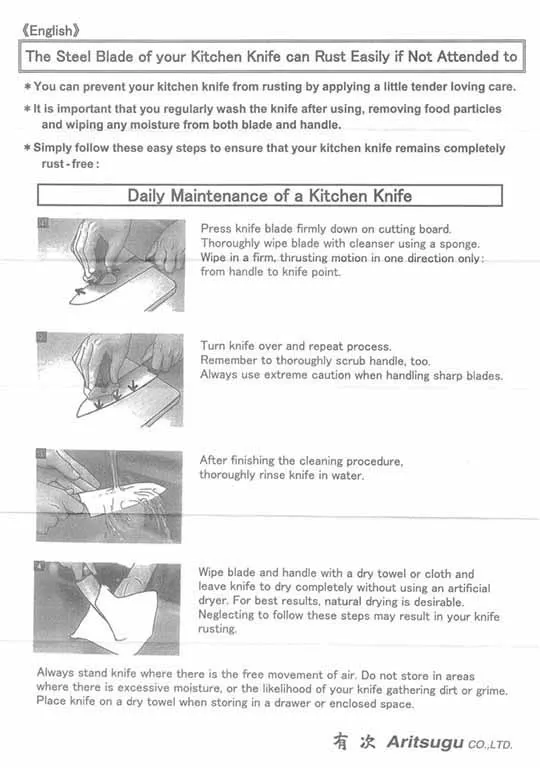
An instruction manual for Japanese kitchen knives written in English was also available.
Aritsugu at Nishiki Market in Kyoto is a sacred place for Japanese kitchen knives. If you like to cook, please visit Aritsugu at Nishiki Market when you come to Kyoto. You will indeed find the Japanese kitchen knife that you want.
